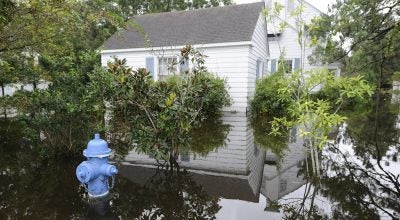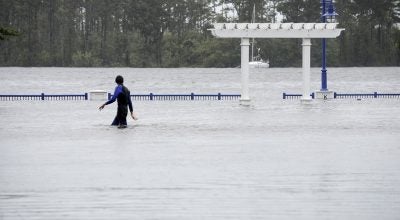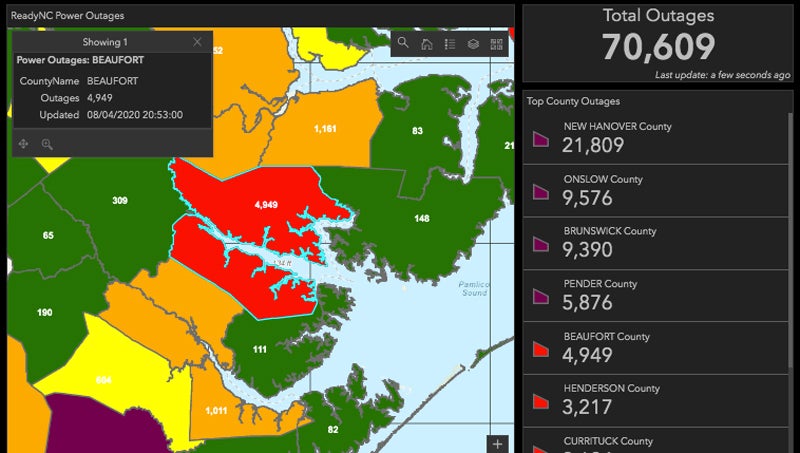Officials warn of bacteria in floodwaters
Published 3:06 pm Saturday, September 15, 2018

- A trashcan sits overturned in floodwaters near North Bonner Street in Washington. (Ashley Vansant | Daily News)
The North Carolina Department of Environmental Quality is warning people to stay out of flood waters due to high bacteria counts. Excessive rains and flooding from Hurricane Florence are the cause.
“You really need to avoid contact with flood waters unless you’re having to do that for rescue or safety purposes,” said Heather Deck, executive director of Sound Rivers, a local environmental advocacy nonprofit. “If it’s not necessary for you to be out there, it’s best you’re not.”
Excessive flooding can lead to the pumping of floodwaters, sanitary sewer malfunctions, overflowing manholes and lift stations failures which could discharge into coastal waters, according to a press release from the North Carolina Department of Environmental Quality.
During Hurricane Matthew in 2016, thousands of gallons of wastewater were discharged into Jack’s Creek when a pump station failed.
“Floodwaters and stormwater runoff can contain pollutants such as waste from septic systems, sewer line breaks, wildlife, petroleum products and other chemicals,” said J.D. Potts, manager of the N.C. Recreational Water Quality Program.
“There’s a lot of things that could go wrong, including some nasty stuff in the water that if you don’t have to be contact with, don’t,” Deck said.
While state officials will not have immediate laboratory confirmation that disease-causing organisms are in the water, there is an increased chance that contamination will be present following the storm, and those swimming have an increased chance of adverse health effects. Residents and visitors should avoid swimming in all coastal waters until testing indicates bacteria levels meet state and federal standards. Testing will begin as soon as conditions are safe to do so and areas are accessible. The advisory will be lifted in part or in whole as test results become available, the release stated.
While northeastern North Carolina did not experience the excessive amount of rainfall of the southeastern part of the state, the Tar and Pamlico rivers will continue to see high water as the rain drains into local waterways.
“Given the generally slow rise of area rivers, most won`t crest until mid to late next week, extending the impacts from this long duration flood event,” read the National Weather Service update issued at 11:31 a.m. Saturday.
The Pamlico River measured 5.23 feet above normal at 2 p.m. Saturday; 4.5 feet is considered flood stage. The gauge, located at the Washington U.S. Highway 17 bypass bridge, measured 8.55 feet at the height of Florence’s storm surge.
Deck said the public should be wary of flood water, regardless of the bacteria level.
“With these flooding conditions, especially flash flooding, you may not be able to see where there’s a storm drain or road washed out if you’re walking in flood waters,” Deck said. “It may not look like flood waters are moving at a massively rapid rate, but they are, and it’s certainly an extreme danger.”





